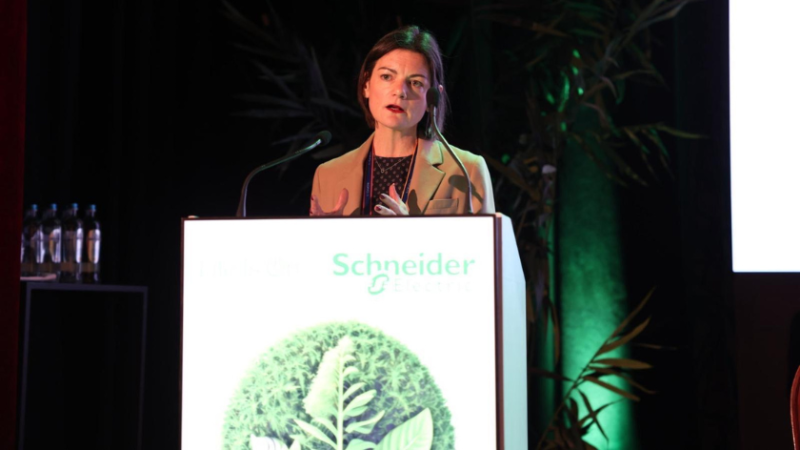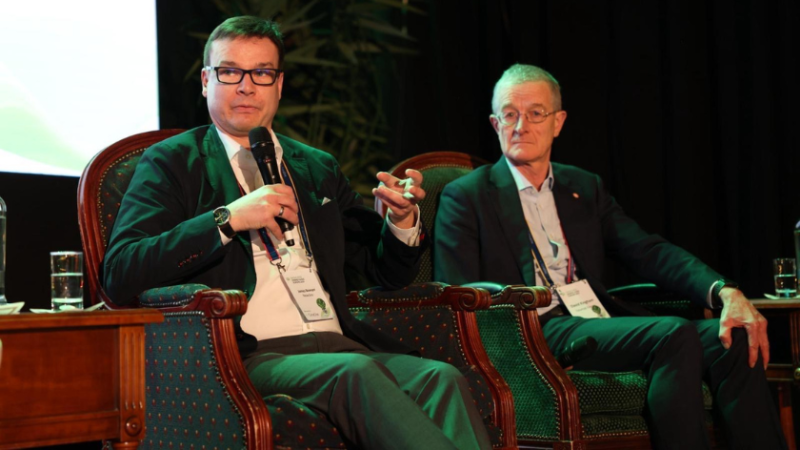8 things we learned at Datacloud Energy & ESG 2025
)
Uncover the key talking points from the inaugural Datacloud & Energy ESG summit
If data centre developers are going to meet the enormous power demands related to AI buildout, there needs to be a lot of collaboration with those supplying the power – and those regulating how this power is allocated.
Ensuring this dialogue between regulators, data centres and power companies and grids was the thinking behind the Datacloud Energy & ESG event in Brussels – and here are eight takeaways from the two days.
It takes three to tango
One theme that permeated both days of Datacloud Energy & ESG Europe was the need for greater collaboration and transparency between the three vital elements of data centre expansion – the data centre operators themselves, the grid operators and power suppliers, and regulators (not forgetting the clients, as host Mark Acton pointed out).

Delegates in Brussels heard the good and the bad in this regard. A joint presentation on Microsoft and Fortum’s collaboration in Finland for waste heat reuse showed the benefits of joined up thinking from the start.
But panellists and speakers also highlighted examples of where this hasn’t worked so well – for example, recent announcements for AI Growth Zones in the UK where the country’s grid operators were not as involved in the planning as would have been ideal.
However, the two days in Brussels saw representatives from all three areas come together to share perspectives and learn from each other – something that will benefit everyone involved.
Data centres help the grid, tooMuch of the data centre power conversation is one way – how much do data centres need, and how difficult is it going to be to provide it? But as the previous point shows, it’s all about collaboration – and well-planned data centres can make an invaluable contribution to grid security too.
As Data4’s François Sterin pointed out on a panel dedicated to this, data centres can be flexible consumers of power, which is a valuable balancing service for the often-fluctuating patterns of electricity generation.

Other contributions highlighted in this regard were extended battery capacity and on-site secondary generation, which as nLighten’s Chad McCarthy highlighted create grid stabilising services for a variable load profile. Iron Mountain’s Chris Pennington gave an interesting example of this – the company’s New Jersey facility that is more or less entirely powered by an on-site, grid-supported battery.
These examples show the importance of joined-up dialogue – and coming to a realisation that each of the three pillars of data centre development listed above has the potential to make the others’ lives easier.
Read more: Datacloud Energy & ESG 2025: Can data centres become grid enablers in the green transition?
Building where the power is, not where the fibre isPower as a key consideration for data centre locations is not new – as the growth in Iceland’s data centre market partially shows.
But the topic has become more acute in recent years following power availability challenges, and speakers in Brussels echoed recent events in Singapore, Dubai, and Fort Lauderdale by speaking of the need to build where the power is and worry about fibre connections later.
As KevLinx’s Eric Boonstra put it; “In the old days, we followed the fibre – that’s why we have FLAP (Frankfurt, London, Amsterdam, Paris). It’s changing to follow the power – we’re looking at where there is power and where we can build.”

This is less of a factor in Europe than it is in the US, where states such as Texas are seeing huge power-related growth in capacity, but several speakers in Brussels talked about seeing a trend of developers prioritising power availability in their site selections. This is long overdue according to some. As moderator Loren put it, “Data centres are like the child that was never told no” – and now it’s time to make adjustments.
Waste heat reuse is on the rise – but it’s not that simpleReusing data centre heat has been on the cards for quite some time, with projects such as Microsoft and Fortum’s collaboration showing how it can be done – and with the data centre PR problem not going away, this was highlighted as a good opportunity to improve relationships not just with nearby residents but with the municipal governments that serve them too.
Much of the waste heat discussion centred on Germany’s recent introduction of legislation to mandate a certain level of heat reuse – as part of the country’s Energy Efficiency Act, data centres built after July 1 2026 must reuse 10% of their energy, with this figure rising to 20% by 2028.
But multiple attendees and speakers highlighted some challenges with making this happen.
Who takes the lead to secure heat reuse in municipalities? Are data centres contractually obliged to supply this waste heat, and if so, what happens if a co-location provider loses clients? Should data centres locate near settlements or should developers be encouraged to build near data centres, and if it’s the latter, how can developers, planning officials and data centres collaborate to make it happen?
Lots of questions – and all eyes will be on Germany to see how mandated heat reuse becomes a reality.
Grid infrastructure needs to moderniseAnd if it doesn’t, data expansion and AI growth is going to come under threat. This was the message delivered by AWS’s Niamh Gallagher in her keynote session, who placed particular emphasis on policymakers, grid operators and data centre operators to work together to balance growth and sustainability.

“There’s no conversation about data centre growth that doesn’t almost immediately touch upon the need to seriously modernise European grid infrastructure,” said Gallagher. This modernisation and upgrade, according to Gallagher, needs to come in three main areas – grid investment based on future demand projects rather than current requirements, better systems for upgrade permits, and improving connectivity to cut out power bottlenecks.
What works for the North can work for the South……up to a point. A session on the differences in data centre markets between Northern and Southern Europe, and what the latter can learn from the former, threw up some interesting insights.
While policy developments and inter-player collaboration is something easily applicable between different regions, one difference highlighted was the market maturity of the cloud sector. Southern Europe is seeing migration of legacy workloads to the cloud, whereas in Northern Europe this is actually reversing in places, with customers moving away from cloud storage for certain requirements.
Nuclear for DCs in Europe isn’t coming any time soon – but planning is needed“AI delay is not linear; AI delay is exponential. We’ll be lightyears behind the US and China if we don’t act now.” These are the words of Digital Realty’s Lex Coors in his keynote address – but various speakers in Brussels were not sure nuclear power was likely to meet this demand in the near future.
Firstly, there is the timescale issue. As Newcleo’s James Bowyer put it: “In terms of deployment, realistically scale is mid 2030s onwards. You need to be planning now, not just the build time, but where can the likes of data centre operators and developers work with SMRs on the long-term view.”

Other speakers gave similar timelines – 10 years for a 50MW plant in the US; 2040 or so for a UK government-funded programme.
Secondly, there is the cost and availability of fuel. Russia dominates production of the type of nuclear fuel best suited to SMRs, with efforts being made to boost production in other countries, particularly France and the United States.
The conclusion? Data centre operators could do with starting planning for a 10-year horizon, but greater collaboration with energy suppliers is needed right now. But maybe the last word should go to Digital Infrastructure Advisors’ Loren Long (who holds degrees in nuclear engineering) – “Nuclear is the only solution.”
We need geo diversity to scale for AI
A panel dedicated to how Europe can scale up for AI demand was united around one theme. Every region needs to play a role – with the potential to turn FLAP-D into half an alphabet of locations, in the words of Mark Acton in his closing summary on Day 2.
“The scale-up is the challenge right now, and with the speed and the amount of data required we are being pushed to the limits in many markets,” said Judith Gardiner, VP of growth for emerging markets at Equinix.

“We are seeing slow movement towards shifting centres of gravity to cities like Madrid, Milan and Warsaw, but there is still hesitancy due to latency concerns and perceived risks.”
Growth in the Nordics is helping to achieve this, but it’s a question of a continent-wide efforts – and Datacloud Energy and ESG included country-focused roundtables for markets including Belgium, Italy, the Nordic countries, Poland and more to examine how to do this on a market-by-market basis.

